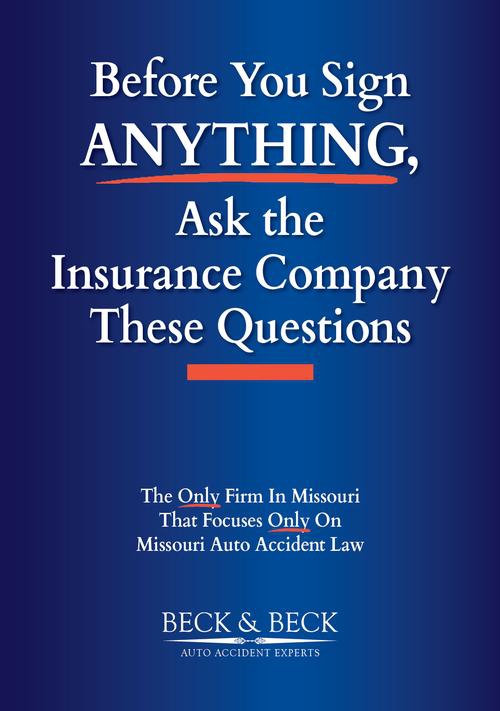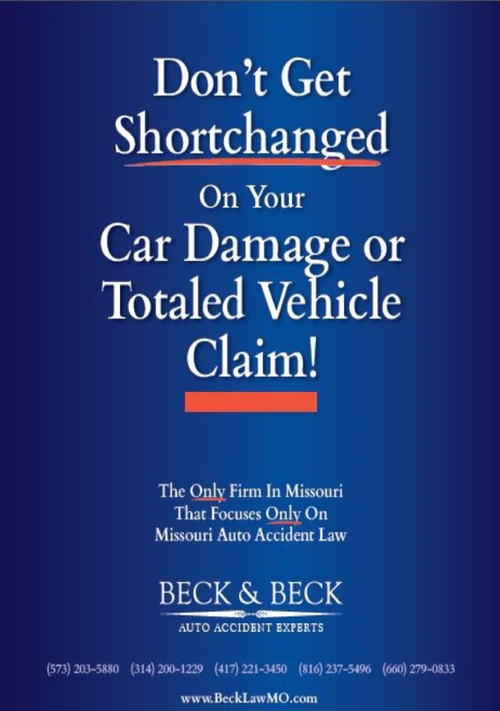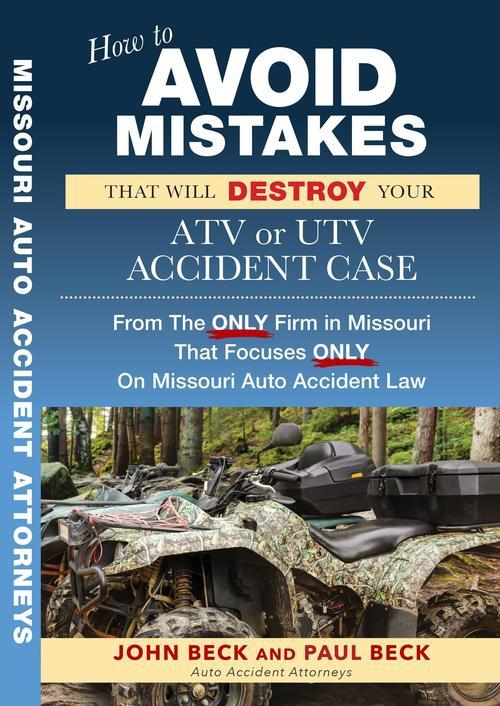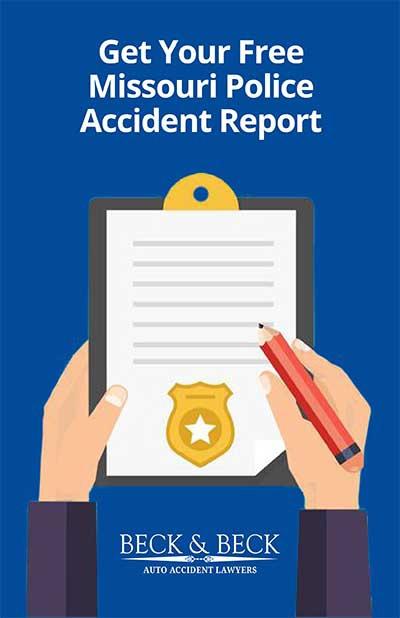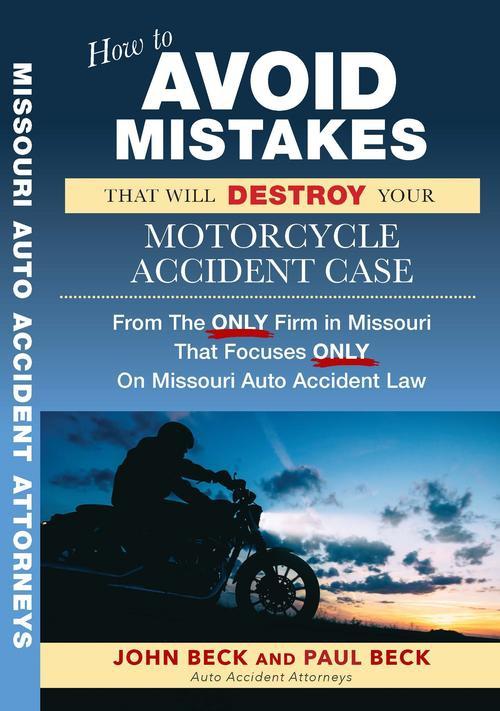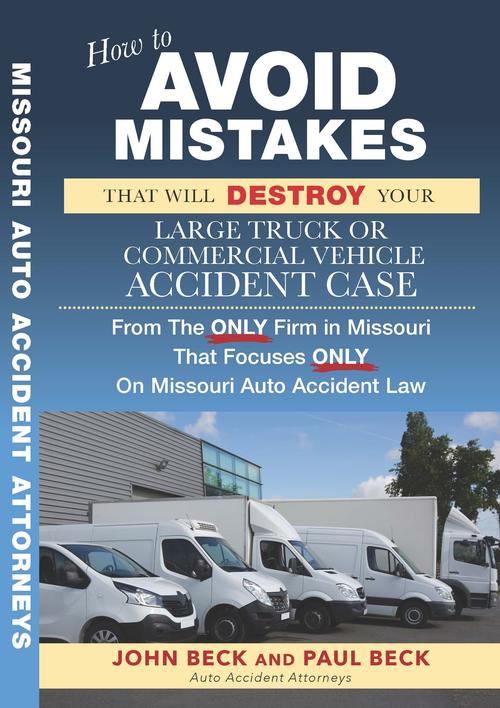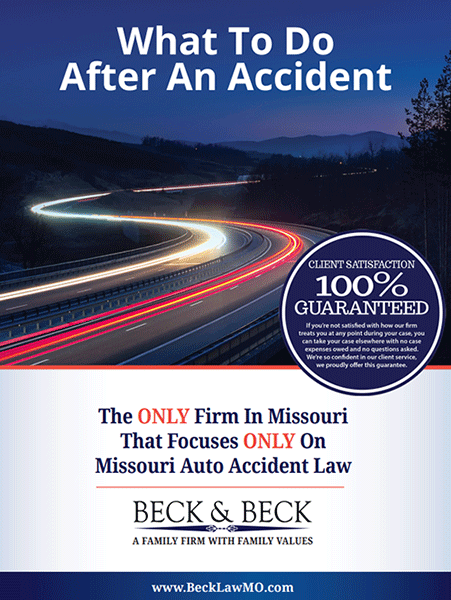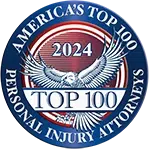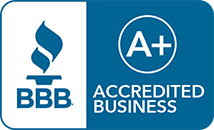Intersection accidents in Missouri are a common and serious issue, accounting for many traffic collisions across the state. According to the National Highway Traffic Safety Administration (NHTSA), approximately 40% of all car crashes in the United States occur at intersections, with driver error contributing to about 96% of those accidents.
In Missouri, where cities like St. Louis and Kansas City see high traffic volumes and rural areas often lack advanced traffic controls, intersections pose unique risks for drivers, cyclists, and pedestrians alike. Despite safety measures like traffic signals, stop signs, and crosswalks, these areas remain some of the most dangerous on the road.
Intersections, defined as points where two or more roads meet or cross, require drivers to make quick decisions, navigate multiple hazards, and comply with specific traffic rules. Unfortunately, many drivers fail to follow these rules, leading to collisions.
Studies show that failing to yield the right-of–way, speeding, and running red lights or stop signs are among the leading causes of intersection accidents.
Rear-end and angle collisions are prevalent, accounting for 36% of reported accidents, with driver errors causing 96% of these incidents. Common factors include inadequate surveillance (44.1%), false assumptions (8.4%), and obstructed views (7.8%).
Younger drivers often face distractions, while older drivers struggle with gap judgment. Male drivers are linked to aggressive driving or illegal maneuvers, whereas female drivers frequently encounter inattention or distractions.
Certain types of intersections are particularly prone to accidents. Flashing traffic lights can confuse drivers unfamiliar with the area, leading to hesitation or misjudgments. Stop sign accidents are common when drivers fail to come to a complete stop or miscalculate another vehicle’s speed or position.
Confusion can escalate at uncontrolled intersections, where no signals or signs dictate the right-of-way, especially in rural areas where such intersections are more prevalent. T-intersections, where one road ends at another, also present dangers as drivers turning onto the main road may underestimate the speed of oncoming vehicles or fail to notice them altogether.
The consequences of intersection accidents are often severe. Injuries can range from minor cuts and bruises to catastrophic outcomes like traumatic brain injuries, spinal damage, or fatalities. These crashes also result in significant financial costs, including medical bills, lost wages, and property damage.
While traffic safety devices and roadway design aim to minimize risks, the human factor—distractions, reckless driving, and noncompliance with laws—continues to play a significant role.
Intersection accidents in Missouri highlight the importance of cautious and defensive driving. If you or a loved one has been involved in such an accident our experienced Missouri auto accident attorneys can provide expert legal support to help you recover the compensation you deserve.
How Do Intersection Accidents Typically Occur in Missouri?
Intersection accidents often occur in Missouri due to a variety of driver behaviors and environmental factors. These crashes can occur in urban areas with heavy traffic or rural locations where intersections may lack proper signage or visibility. Understanding how these accidents typically occur can help drivers take preventative measures and reduce their risk of collisions.
Running Stop Signs or Red Lights
One of the most common causes of intersection accidents is drivers failing to obey stop signs or red lights. This often happens because a driver is distracted, in a rush, or under the influence of alcohol or drugs.
Ignoring these critical traffic controls can lead to severe side-impact or T-bone collisions, especially if another vehicle is legally passing through the intersection. Even running a yellow light at the wrong moment can result in a crash if other vehicles enter the intersection simultaneously.
Failing to Stop in Time
Drivers approaching an intersection too quickly may find it difficult to stop their vehicle in time, particularly when the light changes or another car unexpectedly slows down. These situations frequently lead to rear-end collisions, which can cause significant damage and injuries to occupants. Speeding often contributes to these accidents, as it reduces the time available to react and increases stopping distances.
Obstructed Visibility of Signs or Intersections
Sometimes, accidents occur not because of a driver’s negligence but due to poor roadway design or visibility issues. For example, overgrown trees may obscure stop signs, or intersections lack adequate lighting or clear markings. These factors can prevent drivers from recognizing an intersection in time to stop or yield, creating dangerous conditions for all road users.
Failure to Yield the Right-of-Way
Confusion over the right-of-way can lead to accidents at intersections with four-way stops or uncontrolled intersections. A driver may incorrectly assume it is their turn to proceed and enter the intersection when another vehicle approaches. This often results in side-impact or t-bone collisions, which are particularly dangerous due to the lack of structural protection on the sides of most vehicles.
Impaired or Distracted Driving
Distractions, such as texting or using a phone, and impairments from alcohol or drugs are also leading causes of intersection accidents. These behaviors reduce reaction times and lead to poor decision-making, increasing the likelihood of a collision.
Intersection accidents in Missouri can have devastating consequences, but understanding their common causes is crucial for prevention. Drivers should remain vigilant, obey traffic laws, and cautiously approach intersections to protect themselves and others on the road.
To learn more about the causes of intersection accidents in Missouri, schedule a free consultation with the skilled legal team at Beck & Beck Missouri Car Accident Lawyers today.
Who Is At-Fault in an Intersection Accident in Missouri?
Determining fault in an intersection accident in Missouri is often complex and requires a careful analysis of the circumstances. While some accidents may seem straightforward, such as when a driver runs a red light, others can involve multiple factors, making it challenging to assign blame.
Missouri follows a comparative fault system, meaning liability can be shared between parties based on their level of responsibility for the accident.
Fault in Side-Impact Collisions
In side-impact collisions, it’s easy to assume that the driver who struck the side of another vehicle is at fault. However, this isn’t always the case. For example, if the striking driver had the right-of-way—such as proceeding through a green light—and the other driver entered the intersection after running a red light, the fault may lie with the second driver. These situations require a thorough investigation to determine which party breached their duty of care.
Proving Fault in Missouri
Proving fault in an intersection accident involves establishing that one driver’s negligence caused the crash. Negligence is determined by meeting the following legal criteria:
• Duty of Care: All drivers must operate their vehicles to minimize the risk of harm to others.
• Breach of Duty: The at-fault driver must have violated this duty, such as by running a stop sign, speeding, or failing to yield the right-of-way.
• Causation: The breach of duty must be directly linked to the accident and the injuries sustained.
• Damages: The victim must have suffered measurable damages, such as medical expenses, lost wages, or pain and suffering.
Shared Fault in Missouri
In Missouri, a driver can still recover compensation even if they are partially at fault for the accident. Under the state’s comparative fault laws, any damages awarded will be reduced by the victim’s percentage of fault. For example, if a driver is found to be 20% at fault for the crash, they can recover 80% of their total damages.
Determining fault can be challenging because intersection accidents often involve conflicting accounts from drivers, witnesses, and physical evidence.
Investigations may include reviewing police reports, analyzing traffic camera footage, and consulting accident reconstruction experts. By establishing liability, victims of intersection accidents in Missouri can seek the compensation they deserve for their injuries and losses.
To learn more about liability in Missouri car accident claims contact an experienced Missouri intersection accident lawyer from our law firm. We offer free case evaluations.
The Other Driver is Blaming Me for the Missouri Intersection Accident, What Now?
Being blamed for an intersection accident in Missouri can feel overwhelming, especially when you know the other driver’s account of the events isn’t accurate. Intersection accidents often lead to disputed liability, where both parties claim the other was at fault.
These “he said, she said” situations commonly arise because someone ran a stop sign or red light, but without concrete evidence, proving who is responsible can be challenging.
The situation becomes a credibility battle when both drivers accuse each other of wrongdoing. For example, one driver may insist they had the green light while the other claims the same. Unfortunately, defending your version of events can feel like an uphill battle without clear evidence or witnesses.
Insurance companies often investigate these cases, but their goal is to minimize payouts, so they may not always act in your best interest.
The Importance of Evidence in Disputed Liability Cases
In disputed liability situations, gathering evidence is crucial. Documentation such as police reports, photos of the accident scene, and vehicle damage can help establish what happened. Surveillance footage from traffic cameras or nearby businesses may also provide an objective view of the collision. However, identifying witnesses is one of the most effective ways to prove your case.
Eyewitnesses who saw the accident unfold can offer unbiased accounts of the incident. For example, a pedestrian crossing the street or another driver stopped at the intersection may have seen which vehicle ran the red light or failed to yield. Their testimony can clarify a “he said, she said” dispute, helping to establish fault and strengthen your case.
Working with Experts
In some cases, accident reconstruction experts may be necessary to analyze the crash and determine how it occurred. These professionals use evidence like skid marks, vehicle damage, and traffic signal timing to create a detailed reconstruction of the collision
Dashcam Footage, CCTV Footage, and Video Evidence in Missouri Car Accident Claims
Dashcams can be game-changing when proving fault in Missouri car accident claims, particularly in intersection accidents where liability is disputed. These tiny cameras record video footage from a vehicle’s perspective, capturing critical moments leading up to and during a collision. If the dashcam caught another driver running a red light, failing to yield, or engaging in aggressive driving, that footage could serve as compelling evidence.
Missouri courts generally permit dashcam footage as evidence, making it a valuable tool for proving fault. However, the footage must be clear and relevant to hold up in court or during insurance negotiations.
Dashcams have limitations, such as a restricted field of view, which means some events might occur outside their range. Despite this, they remain an excellent resource for documenting incidents like hit-and-runs or capturing license plates of fleeing drivers.
CCTV Footage: A Lucky Break
CCTV cameras, such as those at traffic lights or nearby businesses, can also be beneficial. These cameras often rotate, so the chances of them recording the exact moment of an accident can be slim. However, the footage could provide a neutral, third-party perspective of what would have occurred if the accident had been captured.
Once a police report is filed and the incident is assigned a case number, legal representatives can formally request access to CCTV footage. This process is time-sensitive because many surveillance systems automatically delete recordings after a set period, often 30 days or less. Acting quickly to secure this evidence is crucial.
Challenges and Admissibility
While dashcam and CCTV footage can be powerful, they aren’t always foolproof. For example, poor video quality can reduce reliability, and some insurance companies may hesitate to accept video evidence. When this happens, your lawyer can advocate for its inclusion in court, highlighting its relevance to the case.
Complementing Video Evidence with Other Proof
Dashcam or CCTV footage alone may not provide a complete picture of the accident. Supplementing video evidence with additional materials—such as crash scene photos, debris, skid marks, and witness statements—strengthens your claim. Police reports also play a vital role in corroborating what video evidence reveals, creating a comprehensive case to establish fault.
Whether from dashcams or CCTV cameras, video evidence often makes the difference in disputed accident claims. Its ability to capture moments of negligence or recklessness can provide the clarity needed to secure fair compensation in Missouri car accident cases.
What If More Than One Person Was Responsible for the Intersection Accident?
Understanding Missouri’s Comparative Fault System
As we mentioned, Missouri operates under a “pure comparative fault” system, meaning that fault can be divided among all parties involved in a car accident, including the injured party. This means that even if you were partially at fault for the intersection accident, you can still recover compensation for your damages.
When Liability is Shared
Intersection accidents often involve complex scenarios where multiple drivers may share blame. For instance, one driver may have failed to yield at a stop sign while another was speeding through the intersection. In such cases, both drivers’ actions contribute to the accident, and the fault is divided accordingly.
Insurance companies and legal representatives typically rely on police reports, eyewitness testimony, and physical evidence to determine the percentage of fault assigned to each party.
How Fault Affects Compensation
The injured party can still pursue compensation for medical expenses, property damage, and lost wages, even with shared liability. However, the insurance companies will adjust the payout based on the fault assigned. If both drivers are equally at fault, they may have to seek compensation from the other’s insurance carrier to cover their losses.
This system underscores the importance of gathering strong evidence to minimize your assigned percentage of fault.
Why Legal Guidance Matters in Shared Fault Cases
Disputes over shared liability can complicate intersection accident claims, mainly when drivers blame each other. Insurance companies may use comparative fault laws to reduce payouts, often placing more blame on the other party. A skilled attorney can ensure that fault is pretty distributed and fight to protect your rights.
Ultimately, Missouri’s comparative fault system allows for fairer outcomes in cases where responsibility isn’t clear-cut.
Contact Beck & Beck Missouri Car Accident Lawyers Today
If you’ve been injured in an intersection accident in Missouri, Beck & Beck Missouri Car Accident Lawyers are here to help. With decades of experience, we are committed to providing compassionate, dedicated representation for victims of car accidents.
Our team understands how overwhelming it can be to deal with medical bills, lost wages, and insurance disputes while recovering from an accident. That’s why we work tirelessly to build a strong case on your behalf, focusing on securing the maximum compensation you deserve.
At Beck & Beck Missouri Car Accident Lawyers, we take the time to investigate your accident thoroughly, gather critical evidence, and advocate for your rights every step of the way. Don’t navigate the aftermath of an accident alone—contact our experienced Missouri car accident lawyers today.
Let us handle the legal complexities so you can focus on healing. Contact Beck & Beck today for a free consultation and take the first step toward justice.

